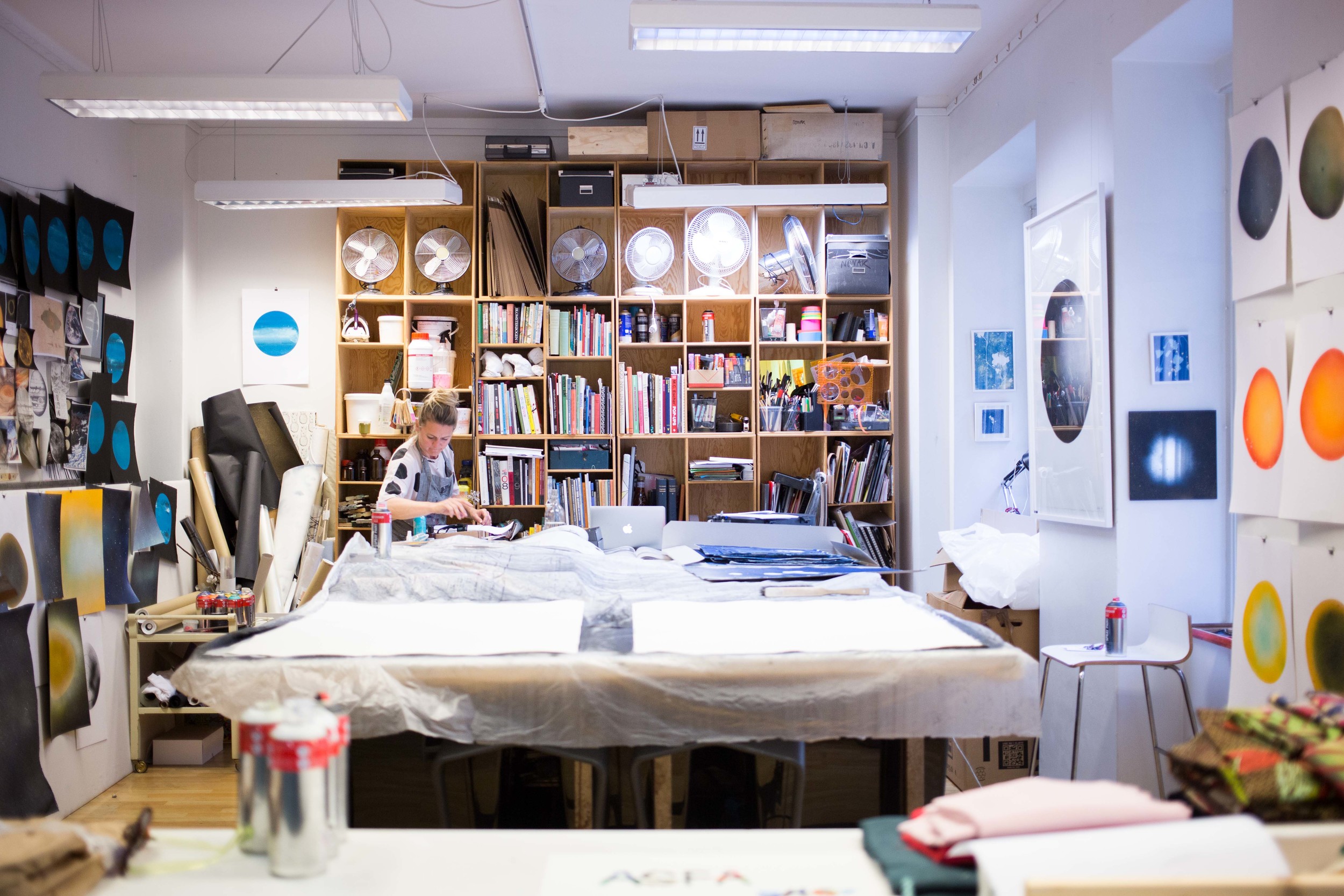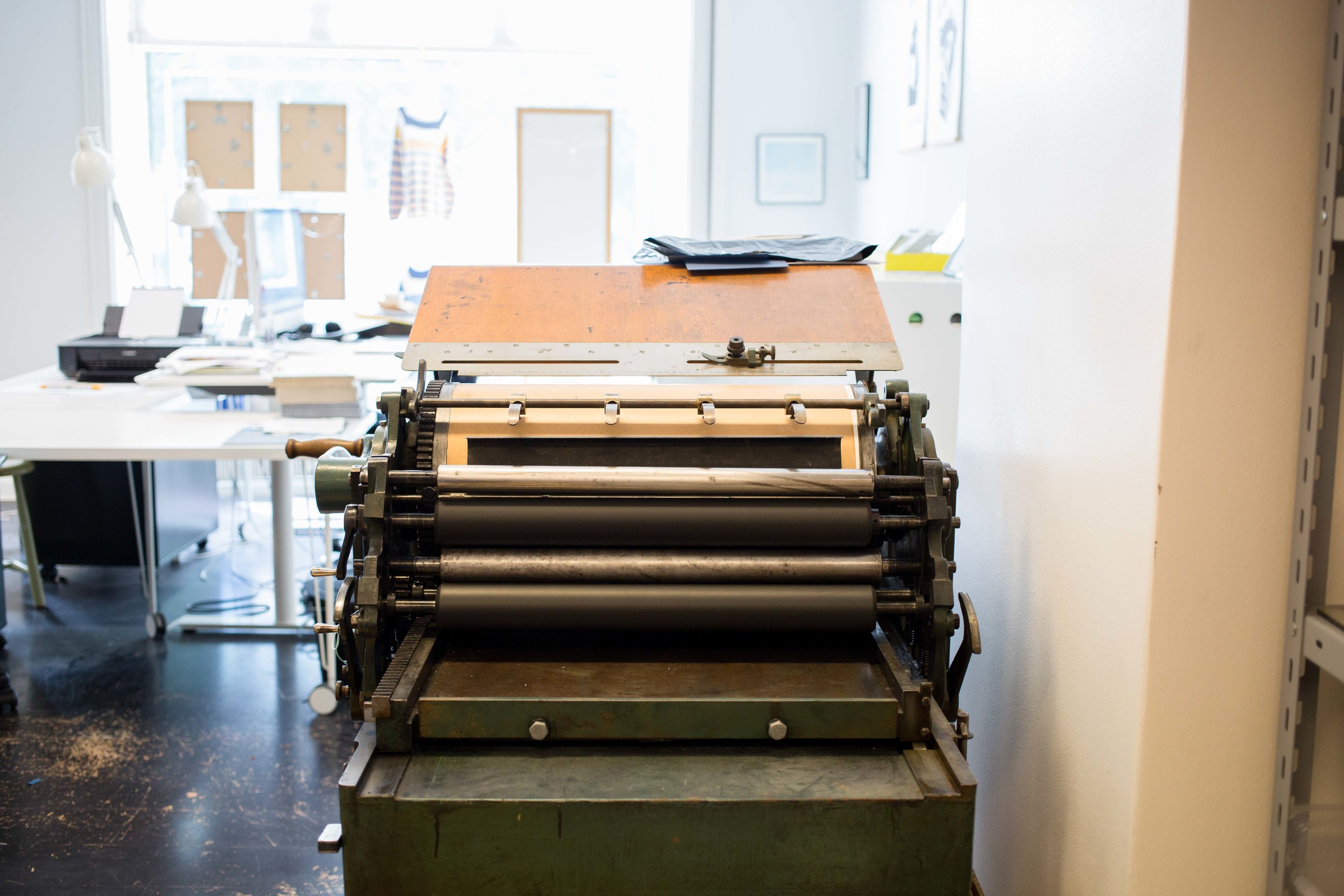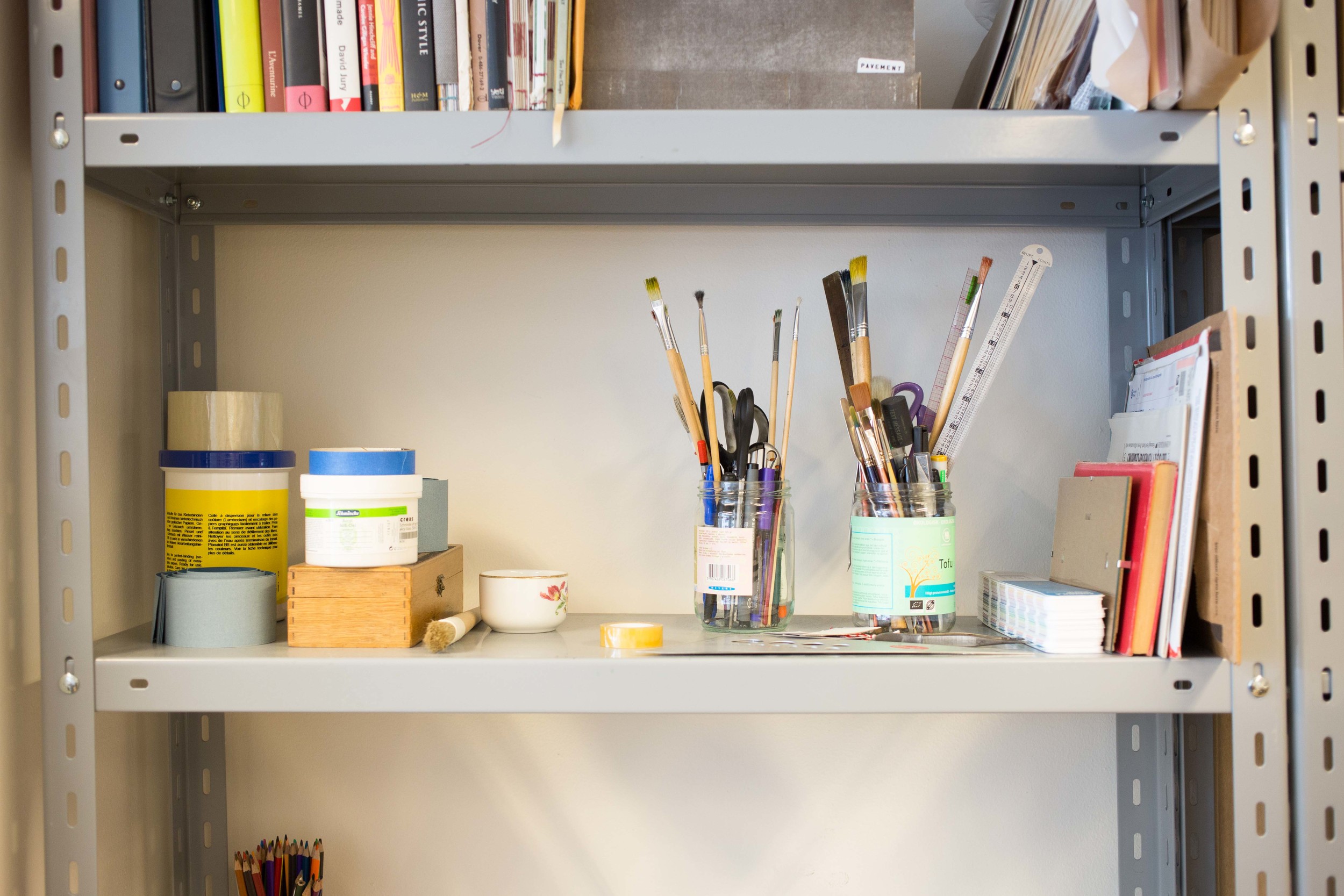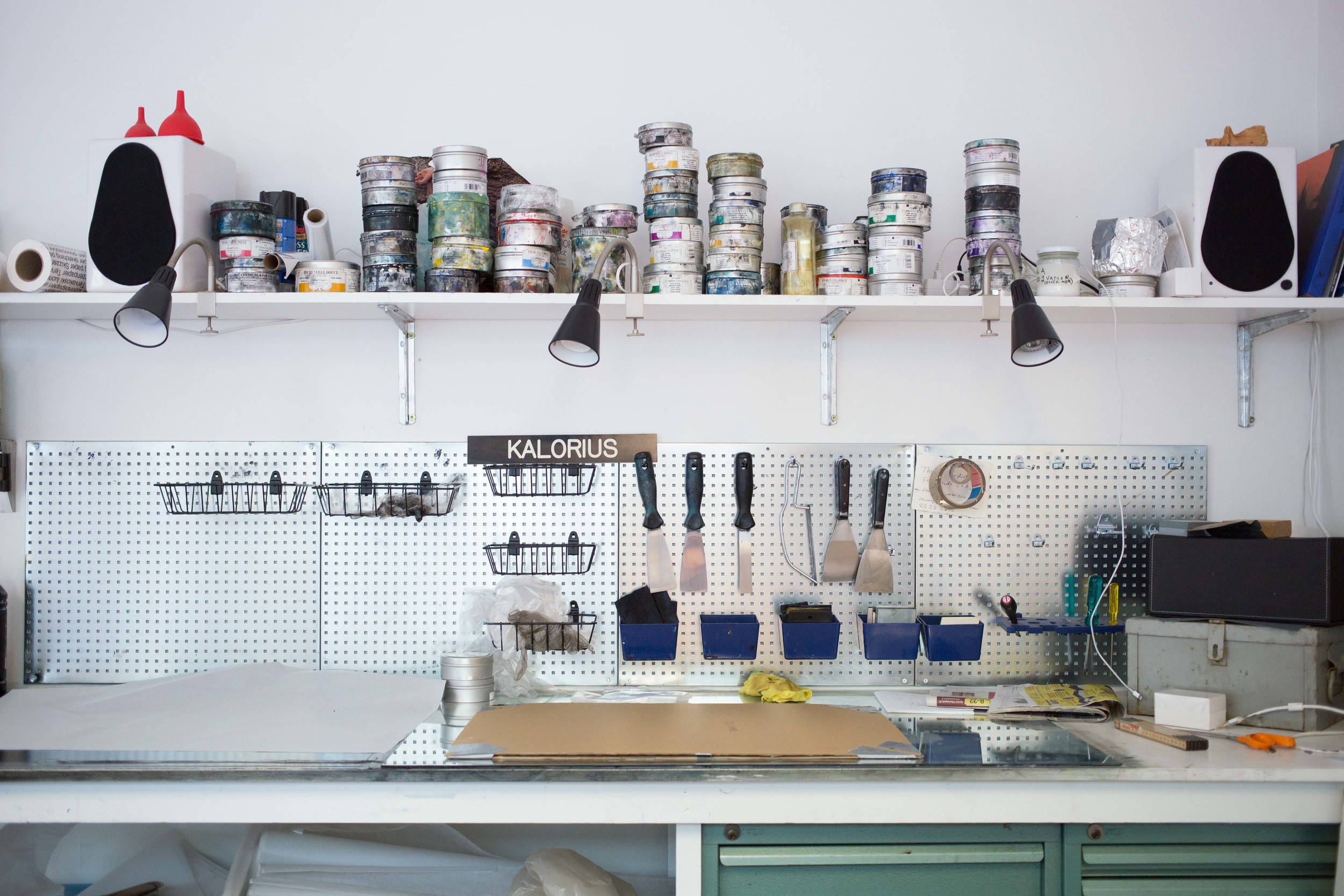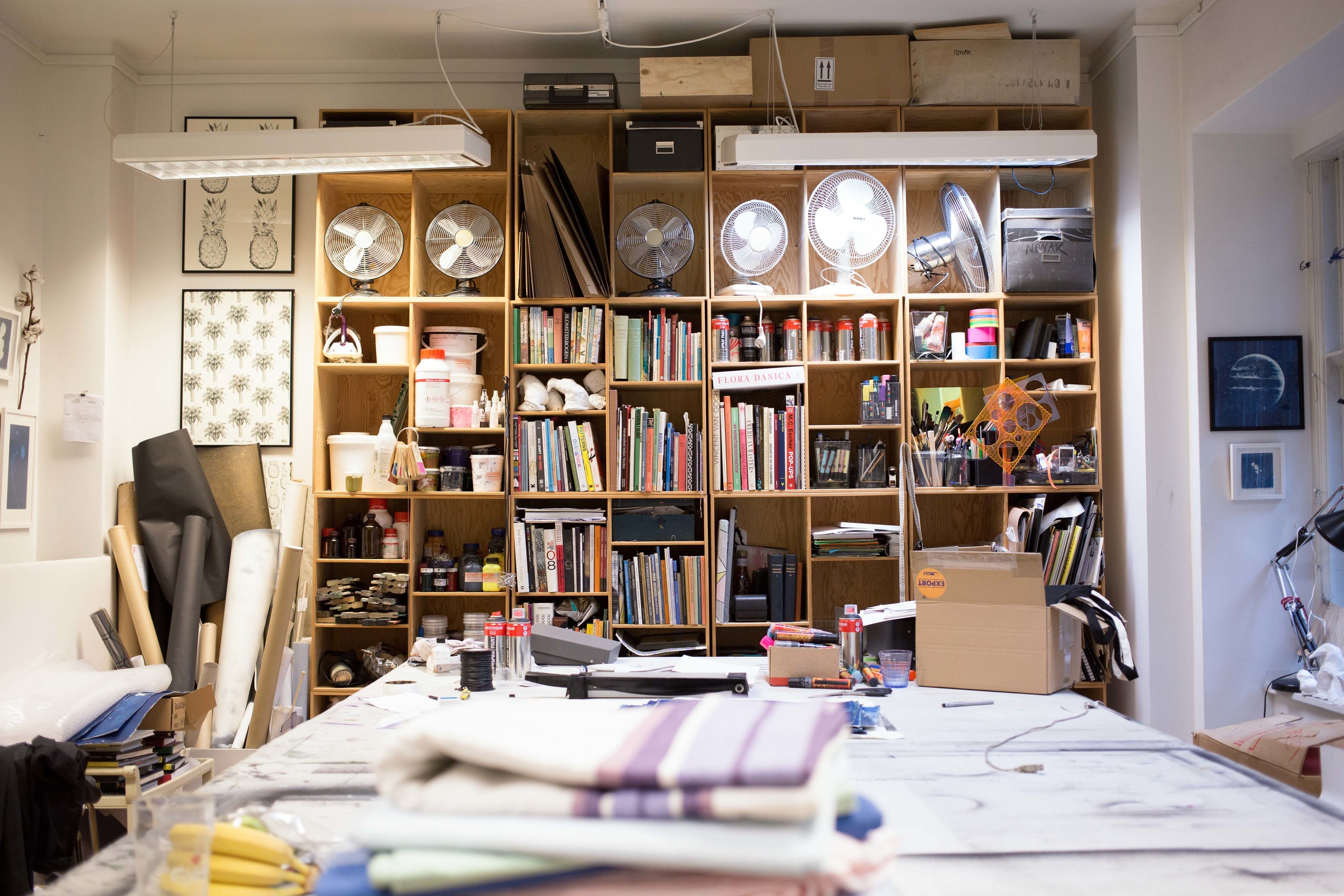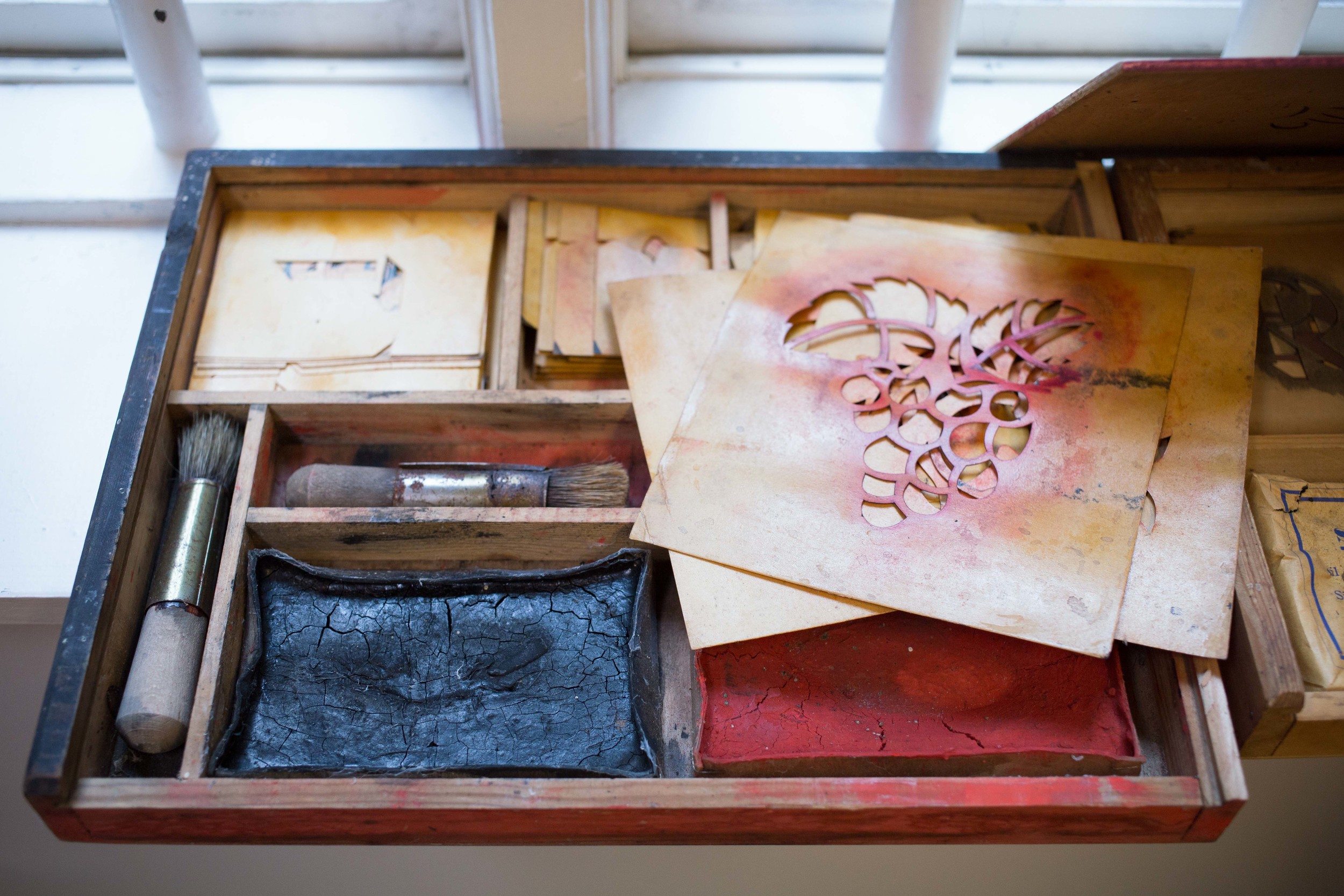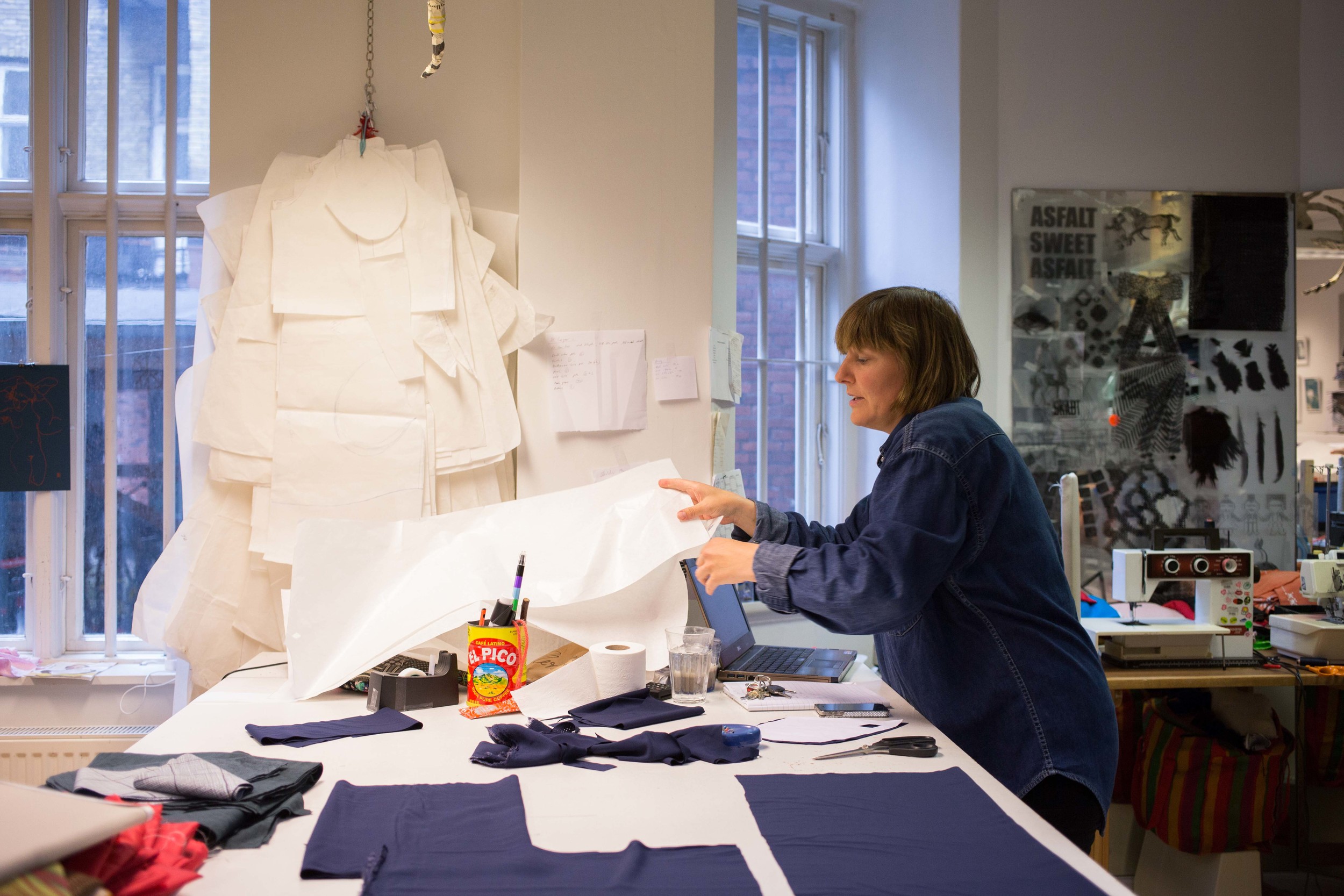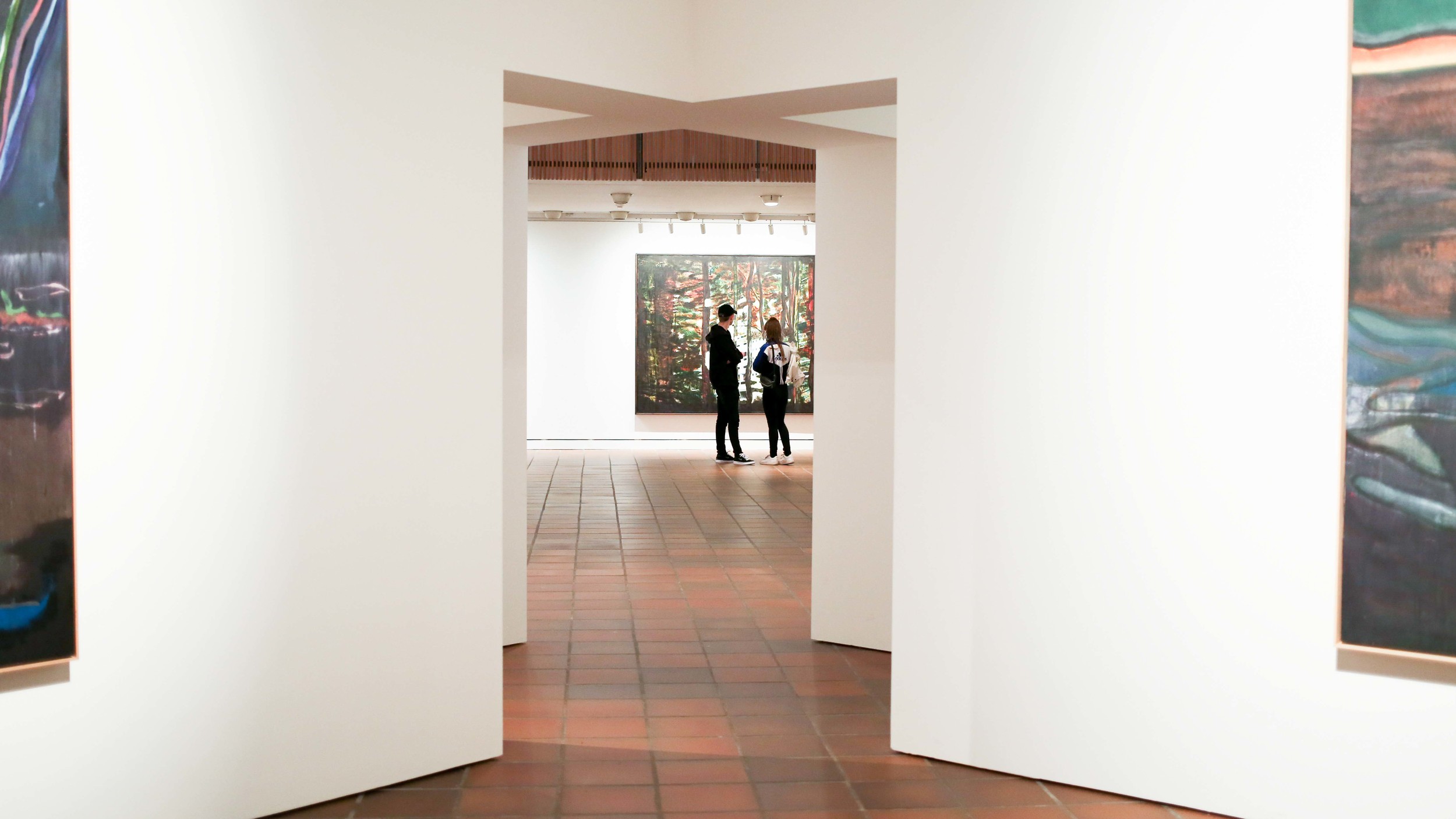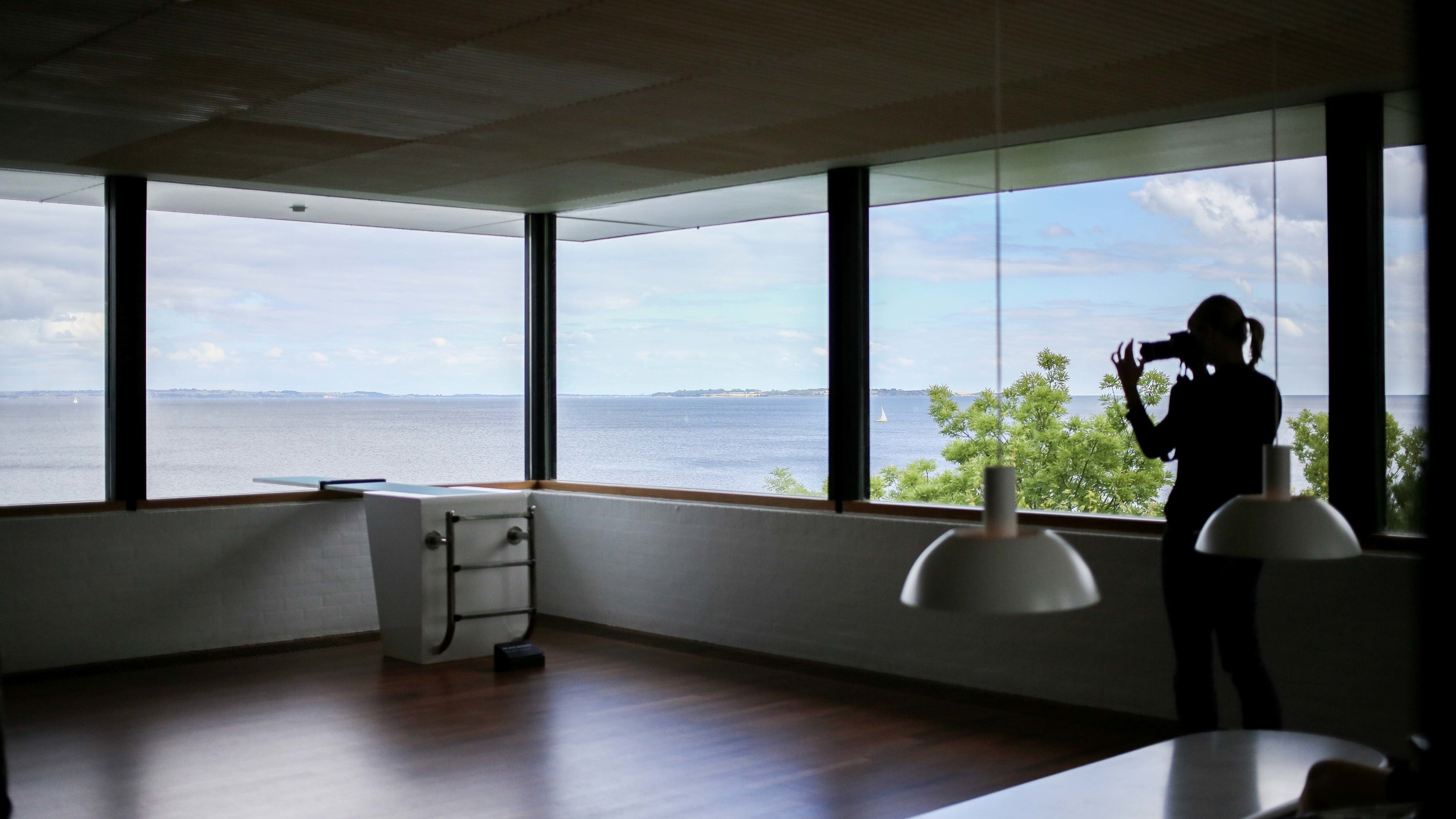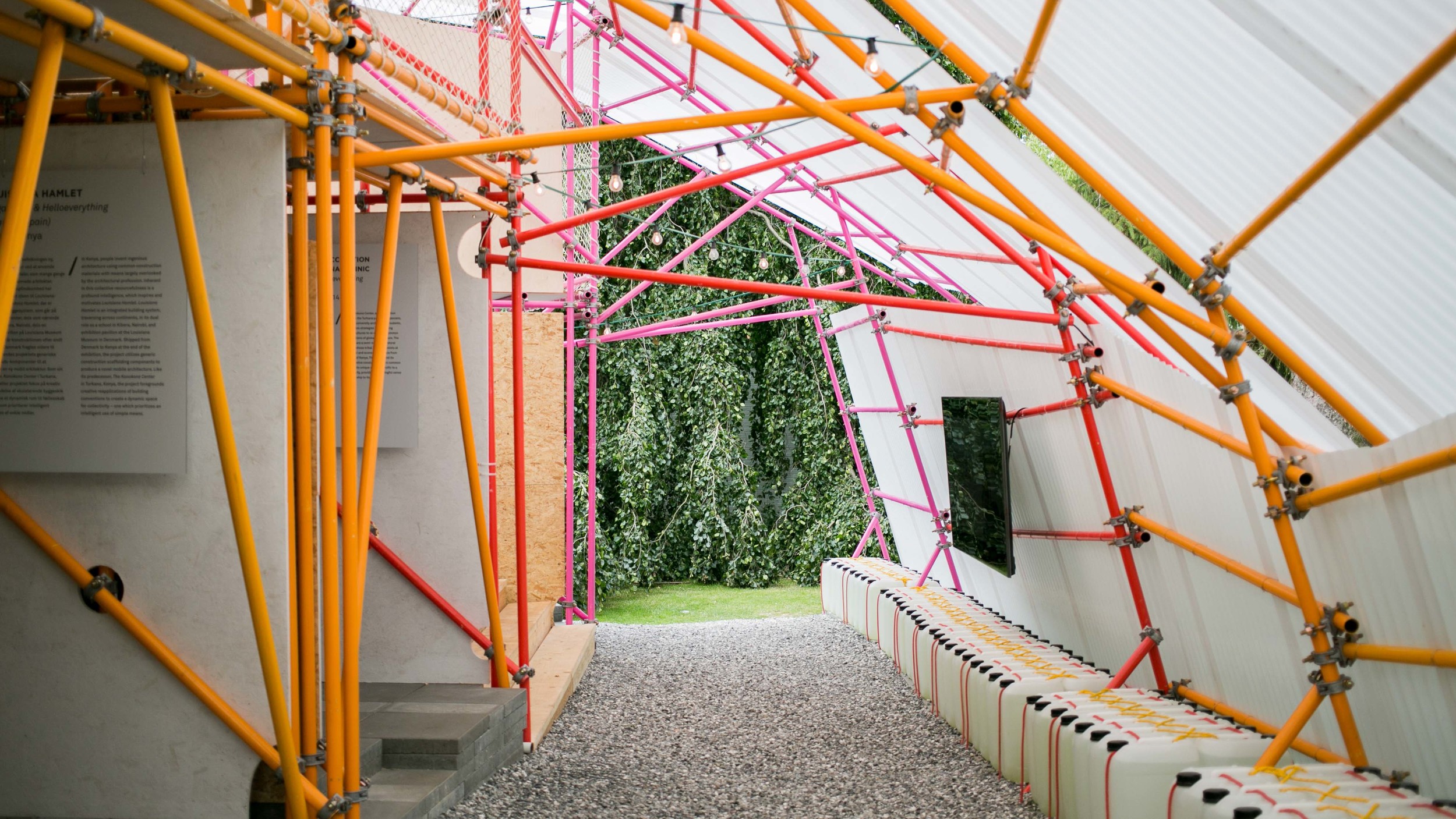Before I left Copenhagen, I went to go visit my new, extended tribe at Alhambra & Sons for a second time. There was one artist in the studio whose space I was very drawn to - you can see some photos of her spot in this blog post. I wasn't able to meet her the first time I visited but I was able to meet her this time around.
Her name is Anne Nowak and her work is: oh, so fantastic.
Interesting fact: the studio that I saw a week before my second visit was not the same studio that I walked into this second time around. There was new work everywhere and there was a productive energy that you could feel was charging the space.
I was originally interested in talking to Anne about some cyanotypes that she had made called 'Dead People's Flowers.' They are beautiful prints created with the process of her going to graveyards and collecting flowers that were thrown out after they had wilted or died. I wanted to purchase one if I could - turns out that she wasn't selling them quite yet because she had some shows the collection was going to tour. (It was recently featured in NYC at Armory Week and has since been gaining a lot of interest.)
There was also another piece that I was interested in taking home with me and it was that of a moon. I loved this piece the moment I saw it and wanted very much to make it a part of my life.
This is a White Moon print from Danish artist, Anne Nowak, and you can purchase it here.
Coincidently, Anne was producing her print, Haze, and was planning on making some White Moons as well. I asked her where I could buy her print and she told me the name of some stores but then offered for me to purchase directly from her. More often than not, anytime you are able to buy directly from an artist, it benefits them more than if you were to go through a store - so, of course I said yes.
We talked quite a bit and she went on to make her first 'White Moon' of two that afternoon.
Prepping for 'White Moon.'
Anne Nowak inspecting her 'White Moon.'
I started to talk to her more about her recent flood of productiveness and she explained to me that she was just so inspired by NASA's photography of planets and space that she had to do something about it. I know the feeling. When you're inspired, you have to ride that energy otherwise you lose it and it leaves you to wallow in regret for a while.
Anne showing me her 'Black Moon' print where the whole process is reversed.
Prototypes of work where you can see her inspiration take effect. What I would do to have these, I do not know!
When Anne decided to work on the print I would take home with me, it got really quiet. During the making of the first moon, she was describing all of the components that were going into it: the spray paint, the kind of paper she used, her template, etc. but the entire time this moon was in production, there was a mysterious cloud that silenced the both of us.
Anne preparing to wrap up my 'White Moon' on the bottom right.
We looked at it after it was done and compared it to the first one.
"It's darker in its energy," she said. "Maybe it's because I was making it for you."
I laughed. I am known to have interest in dark energy so I'm glad she was able to pick up on that. It was almost as if she felt who I was and translated it into one of her many versions of her moons. Fascinating, no?
This art piece is something I will cherish and always keep close - not only because it is visually pleasing but also because of the story that comes with it. I fundamentally believe that as much as we are automating a lot of services through technology, we as humans will crave craftsmanship and personal interaction as time goes on. So, if you haven't already, find some artists, spend time with them, and invest in their craft. You may learn a thing or two about your own skills but they may also reveal things about you that you may not know.
Moral of the story is that Anne Nowak is a fantastic artist and it was so lovely to meet her and spend time with her in her studio space. Follow her on Instagram and check out her work on her site.
Service Design Notes: More and more, people are wanting to know how something is made rather than just being given product. To demonstrate process is a great way to design services because there is an underlying educational component the service receiver is also receiving. It keeps users engaged throughout the process and the end service that is being received feels more satisfactory and goal-like.



